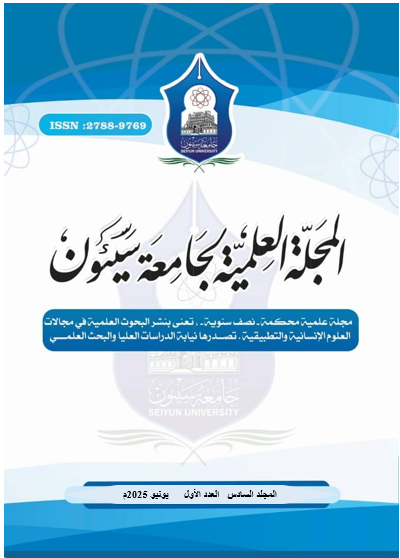Prevalence of Pathogenic Bacterial Isolates Infecting Wounds andtheir Antibiotic Sensitivity in Seiyun General Hospital Authority
Keywords:
Antibiotic, Bacterial isolates, wound infectionAbstract
The rapid development of pathogenic bacteria resistant to common antibiotics represents a major health problem for healthcare workers and the community. Therefore, the present study aimed to isolate and identify bacteria associated with surgical wound infection patients and determine the antibiotic susceptibility profiles of pathogenic bacteria isolated from wound patients attending Seiyun General Hospital Authority - Yemen. A cross-sectional study was conducted from February 2024 to December 2024 among patients with wound who hospitalized at Seiyun General Hospital Authority in Seiyun City. Forty-six (46) pus samples were collected from patients wound and transferred immediately to the microbiology laboratory at site of work for pathogenic bacteria isolation and identification by standard bacteriological procedures. Also, antibacterial susceptibility tests for isolated pathogenic bacteria were determined by using the Kirby-Bauer disc diffusion technique. The results showed that out of 46 samples, 32 (69.6%) showed bacterial growth; of which 23(71.8%) were Gram-positive and 9 (39.1%) were Gram-negative. Staphylococcus aureus (68.8%) was most common followed by Escherichia coli (12.5%), Pseudomonas aeruginosa (6.3%), Proteus mirabilis (6.3%), Klebsiella pneumoniae (3.1%) and Streptococcus pyogenes (3.1%). The most effective antibiotic for Gram-positive isolates was Gentamicin 10mcg (65.22%). For Gram-negative isolates, Piperacillin/tazobactam 20mcg. Most isolated bacteria were recorded to be extremely resistant to the most tested antibiotics. Staph. Aureus was reported to be susceptible to Gentamicin 10mcg and highly resistant to Ceftazidime 30mcg, Cefepime 30mcg, Ampicillin/sulbactam, Amoxicillin/clavulanic acid 30/20mcg, cefuroxime30mcg. The E. coli isolates showed resistance (100%) to Cefepime 30mcg, Ceftazidime 30mcg, Vancomycin30mcg, Ampicillin/sulbactam20mcg, Amoxicillin/clavulanic acid 30/20mcg and cefuroxime30mcg. The Ps. aeruginosa isolates showed resistance (100%) to all antibiotics except Ceftriaxone 30mcg (50%). The P. mirabilis isolates showed resistance (100%) to all antibiotics except Gentamicin10mcg (50%). Therefore, routine microbiological analysis of wound samples and antibiotic sensitivity testing are recommended so that the physician can treat the wound infection.

